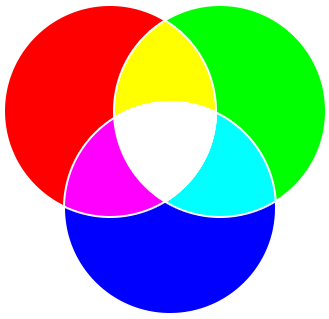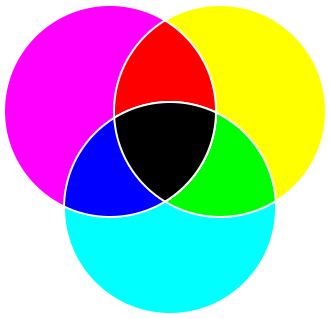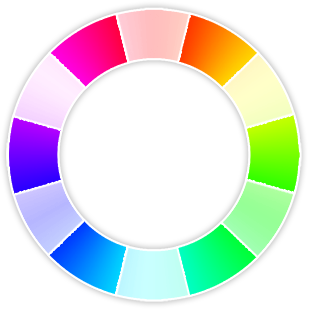The Color Wheel

A color wheel is really just the spectrum twisted around so that the violet and red ends are joined. The color wheel is particularly useful for showing how the colors relate to each other and how you can create new colors by mixing two or more colors. The color wheel really consist of a continual gradient of the colors in the spectrum, but to make things a little easier I will divide the wheel into twelve distinct colors.
 Primary Colors
Primary Colors
Among the colors in the color wheel, there are three colors which are referred to as the primary colors. All other colors can be created by mixing these three colors. The primary colors are, as seen in the figure to the left, red, green and blue.
Why red, Green and Blue?
This might require a bit more explanation - There really is nothing intrinsically primary about red, green and blue, rather they are just points on thecolor wheel. In fact, in the print industry the primary colors are considered cyan, magenta and yellow. (commonly referred to as cmyk, where k stands for black).
 Additive Color System
Additive Color System
If you look very closely at your computer screen or TV (any color source that emits the light itself) you will see that it is built up of tiny red, green and blue dots. This color system is commonly referred to as the Additive Color System. In the additive system, you get white when the three primary colors are present at 100%, as seen in the illustration to the right.
 Subtractive Color System
Subtractive Color System
As I said above, the primary colors in printing is considered cyan, magenta and yellow. This is also called the subtractive color system. The subtractive colour system is what comes to play when the color does not emit any light of its own, but reflects light from its surroundings. In the subtractive colour system, you get black when all colours are mixed.
Since on the web we are dealing only with colors on the screen, we will use the terminology from the additive color system. And since the relative position of the colors to each other is the same wheter you use the additive or subtractive system, the theory and color combinations will work out the same in either case.
 Secondary Colors
Secondary Colors
The secondary colors are what you get when you mix any two adjacent primary colors. Red and green give yellow, red and blue give you magenta and a mix of green and blue result in a cyan color. The secondary colors are also the primary colors in the subtractive color system.
 Tertiary Colors
Tertiary Colors
To complete the color wheel we need to add the tertiary colors. The tertiary colors are those which lie in between the primary and secondary colors. As you can see on the color wheel, they are a further blending of adjacent colors.
 The complete wheel
The complete wheel
Adding it all together, we get the complete color wheel. The color wheel is the foundation for much of color theory, and memorizing the basic layout of it can help you in trying to pick out pleasing color combinations.
To learn more about how you use the color wheel to find great color combinations, please visit our section about
Combining Colors